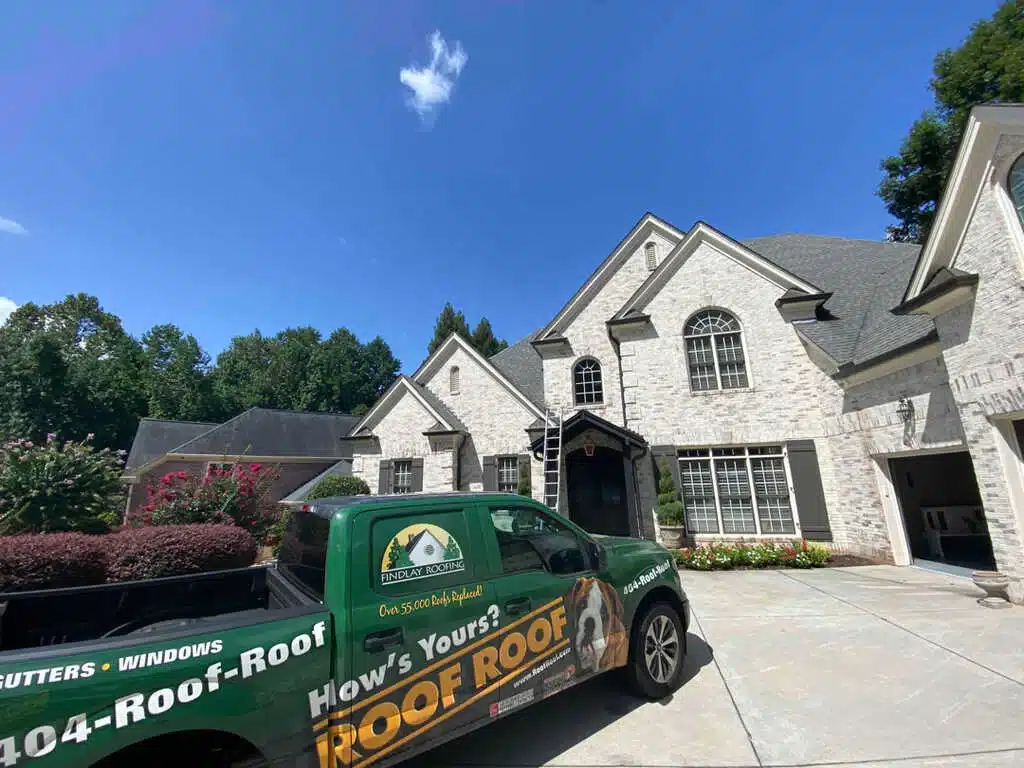Environment affects all aspects of every species living and thriving on Earth. That’s why an eco-conscious movement has begun worldwide to influence us to make sustainable choices in every step of our life. Sustainable roofing is a solution like that.
Sustainable roofing doesn’t have to be a green roof or specially-made eco-friendly material. Any materials that help us save energy and natural resources while having a minimal carbon footprint are considered sustainable roofing solutions.
Let’s discuss what factors make a roofing material a sustainable choice, what are sustainable roofing materials and their environmental benefits.
What Makes a Sustainable Roof?
A sustainable roof is characterized by several key elements, including:
- Roof insulation and ventilation
- Stormwater Utilization
- Sustainable materials
Roof Insulation And Ventilation: A poor roof’s ventilation and insulation cost you more bills. On the other hand, a roof with proper insulation and ventilation capability ensures you use energy wisely and maintain your home’s temperature.
Stormwater Utilization: Stagnant water on the roof can ruin your roof and internal structure with excess moisture. Sloped roofs and roofs with premium gutters can help remove such waste. Water collected from your roof can also be repurposed for your garden or swimming pool, making the system more sustainable and environmental-friendly. A water catchment solution can be added to your roof to make this process efficient.
Sustainable Materials: To add more sustainability points to your roofing, you can select materials that can be recycled, have a long lifespan, and require minimal resources in maintenance—for example, metal roofs.
Environmental Benefits of Sustainable Roofing
Different types of sustainable roofing leave a minimal impact on the environment. Below we’ll explore the benefits of each of them:
- Sustainable Roofing Lasts Longer Than Traditional Ones: A sustainable roofing system offers the longevity everyone desires. They’re made of sturdy materials and can resist leaks and weather damage. That means you don’t have to replace your roof frequently, leaving less impact on the environment and its resources.
- Sustainable Roofing Reduces Green House Emission: Green roof benefits make them the most popular sustainable roofing option. But how do green roofs compare to traditional roofs?
This unique green on such roofs helps to absorb greenhouse emissions that hurt our environment badly. The benefits of green roofs are not limited to reducing harmful emissions. But it’s not without flaws. Let’s discuss green roofs’ pros and cons in detail.
Pros
- Vegetations on the green roof clean polluted air and improve its overall quality
- The greens on the roof soak up excess stormwater and reduce the runoff, which can otherwise damage your house’s structural integrity
- Green roofs add to the beauty of a home, making it more desirable to home buyers
- Green roofs increase biodiversity, becoming a home to birds or other animals
Cons
- Heavier than traditional roofs — additional resources are needed to support its integrity
- Sustainable Roofing Reduces Energy Consumption: A cool roof is a special roofing material that is more energy-saving than traditional roofs. It can efficiently reflect heat and sunlight into the atmosphere, lowering the temperature. Asphalt, concrete, tile, wood, slate, metal — a wide range of materials can be used to design cool roofs. These cool roofs help to maintain a comfortable temperature with consuming less electricity. Less energy consumption also helps reduce green gas emissions and thus helps improve global warming conditions.
- Solar Roofs Help Utilize Solar Energy: Solar roofs look great with all the solar panels on the top. Moreover, it’s an excellent suitable roofing choice in today’s world. Solar roofs help save you more grid energy which uses non-renewable natural fuels.
- Sustainable Roofing Reduces Waste Disposal: Roofs, like metals, are long-lasting and can be recycled again. Such roofing also lasts longer than most traditional roofs. The energy efficiency of metal makes them a great environmental-friendly choice. It can reflect heat and keep the interior cooler in the scorching heat – which eventually helps reduce energy usage.
Clay tile roofing is another sustainable option made from recyclable and natural materials. Like metal, clay tile has a heat resistance quality that saves energy. This type of roof has a long life span of about 100 years.
Wood Shakes and Shingles are roofing materials made from renewable and sustainable resources. This kind of roof is excellent at providing insulation and saving energy.
To sum up
If you want to make sustainable choices for your roof, you have many options with distinct benefits. It’s best to select roofing materials that are long-lasting, recyclable, and have great energy-saving properties. No matter your chosen solution, your goal should be reducing your carbon footprint.
Selecting the right sustainable roofing according to your needs can be challenging for homeowners, especially when everyone’s climate, budget, and home condition differs. That’s why you must seek professional help. Contact Findlay Roofing professionals and schedule a free consultation to find the ideal roofing material for your next replacement.


